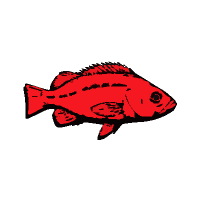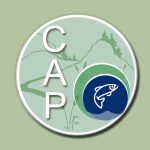
The Coordinated Assessments Partnership (CAP) is a collaborative process to efficiently share and provide access to standardized derived information, such as fish population-scale high-level indicators (HLIs) and supporting metrics. Participants in CAP include state fish and wildlife management agencies, tribes, federal agencies such as National Oceanic and Atmospheric Administration Fisheries (NOAA Fisheries) and Bonneville Power Administration (BPA), and others. CAP is co-sponsored by StreamNet and Pacific Northwest Aquatic Monitoring Partnership (PNAMP).
Scope
The geographic scope of CAP is the Pacific Northwest, with a focus on sharing natural and hatchery-origin fish population-scale information and fish habitat-related information. CAP currently focuses on sharing information that is needed for regional assessments and reporting from across Washington, Oregon, and Idaho. This geographic scope is expected to expand over time as new fish species and reporting needs are identified, such as including Montana when resident trout HLIs are developed.
CAP Vision
Data for selected HLIs are standardized and shared to meet specific regional needs, following an adopted data-sharing agreement.
Background
CAP (previously named “Coordinated Assessments for Salmon and Steelhead” or “CA”) began in 2010 following the conclusion of the 2009 Anadromous Salmonid Monitoring Strategy (ASMS) Workshops (see NPCC ASMS webpage for workshop documents). The ASMS workshops confirmed the wide recognition that data management and sharing are essential for extracting meaningful basin‐wide information from monitoring activities performed throughout the Columbia Basin. In addition, the workshops highlighted the need for developing and supporting data-management and data-sharing capacity through a regional collaborative process for sharing standardized data to inform regional assessments and reporting. (See the below documents for additional information: Data Sharing Workshop to Support Coordinated Assessments – Presentation Handouts (October 2010) and the Anadromous Salmonid Monitoring Strategy Viable Salmonid Population Criteria and Subset of Tributary Habitat and Hatchery Effectiveness (July 2010)). The envisioned regional collaborative process resulted in the creation of CAP by merging ongoing efforts led by the Columbia Basin Fish and Wildlife Authority (CBFWA), NOAA Fisheries, BPA, PNAMP, and StreamNet.
CAP was developed to address the need for the fishery management agencies and tribes that collect salmon and steelhead data in the Columbia River Basin to be involved in the management and use of their data for calculation of population-level metrics and indicators in support of regional scale reporting and population assessments. The initial effort of the project focused on the development of a data exchange standard for three HLIs of natural-origin salmon and steelhead population health: spawner abundance (NOSA); smolt to adult return rate (SAR); and recruits per spawner (R/S). Since 2011, CAP has developed several additional natural-origin salmon and steelhead population health HLIs, including escapement, pre-smolt abundance, outmigrant abundance, and proportionate natural influence (PNI, of integrated natural/hatchery populations). The geographic scope, species, and data categories continue to expand over time in response to regional needs for standardized information and the availability of data. The activities of CAP that resulted in sharing of the initial three indicators are described in Appendix A of the Columbia River Basin Collaborative Data Sharing Strategy: Salmon and Steelhead Population Abundance and Productivity Indicators (Final Draft 2011). This initial work was supported by a U.S. Environmental Protection Agency 2013 Exchange Network grant along with contributions from BPA and partners. CAP is now co-sponsored by PNAMP and StreamNet, as CBFWA has since disbanded.
The Five-Year Plan for the Coordinated Assessments Partnership, which is reviewed and revised annually, guides the work implemented through CAP. HLI data shared through CAP are made accessible through the Coordinated Assessments Data Exchange (CAX) data system, with the data informing the HLIs and metrics being maintained in multiple state, tribal, federal, and other partners’ data management systems. CAP relies on collaboratively developed data exchange standards (DESs) to support data flow between partners and the CAX, and continues to advance the quality of metadata that are a critical component of maintaining the value and usability of data sets. These data and metadata are made accessible through the CAP Fish HLIs mapper and query hosted by Pacific States Marine Fisheries Commission (PSMFC) StreamNet and follow the data-sharing agreements and DES agreed to by CAP partners.
In 2021, under a grant from the U.S. Environmental Protection Agency Exchange Network, CAP partners began developing standards for exchanging hatchery-origin fish HLIs. The list of hatchery HLIs to be shared is being defined through a collaborative process facilitated by PNAMP.
CAP Documents
In addition to the documents below, visit the PNAMP CAP webpage to access more information and learn about upcoming events, meetings, and workshops.
If you have any questions, please contact StreamNet or PNAMP staff.
| File | Description | Publication Date |
|---|---|---|
| CAP Newsletter Fall 2023 | The Coordinated Assessments Partnership’s Fall 2023 Newsletter featuring recent accomplishments, the West Coast Ocean Data Portal and Health Dashboard, and Indigenous Data Sovereignty. | 2023 |
| CAP Newsletter Winter 2023 | 2023 | |
| Five-Year Plan for Coordinated Assessments Partnership 2nd revision of the 2019 adopted version (rev Nov 2022) | This is the 2nd revision of the Five-Year Plan for Coordinated Assessments Partnership adopted in 2019. This November 2022 revised version incorporates edits discussed and supported during the StreamNet Executive Committee meeting on September 21, 2022. | 2022 |
| CAP Newsletter Summer 2022, Issue 4 | 2022 | |
| StreamNet Quality Assurance and Quality Control Plan version February 7, 2022 | The Pacific States Marine Fisheries Commission’s StreamNet Program provides access to standardized data to inform regional assessments, reports, and decision-making processes. This necessitates that quality assurance (QA) and quality control (QC) standards are met, while the best available information is clearly communicated. The StreamNet Quality Assurance and Quality Control Plan was developed to ensure that the quality of the data satisfies the needs of the National Oceanic and Atmospheric Administration Fisheries (NOAA), Bonneville Power Administration (BPA), Northwest Power and Conservation Council (NPCC), U.S. Fish and Wildlife Service (USFWS), and other data consumers. Data submitted to StreamNet’s Coordinated Assessment Partnership Fish High-Level Indicators and Fish Monitoring Data originate from fish and wildlife agencies and tribes. These entities implement pre- and post-submittal QA/QC processes that evaluate data and resolve existing issues. Documenting these processes contribute to data quality and integrity, which provides data consumers with the confidence to use the information, as well as facilitating the resolution of future questions regarding the data. To communicate the QA/QC implemented by data providers and PSMFC-StreamNet staff, this plan partitions the effort into the following phases: Phase 1 – Quality Assurance; Phase 2 – Quality Control; and, Phase 3 – Quality Data Visualization. | 2022 |
| 2022 Implementation Plan for Pilot Focused on Phase 2 QC – Visual Checks, version February 7, 2022 | Document describes the approach for implementation of the pilot QC visual checks during 2022. The purpose of the pilot to to inform number of records that can be reviewed quarterly, improve how records selected and reviewed for the visual checks are documented , and inform how to handle review of records submitted by non StreamNet funded partners. | 2022 |
| CAP Newsletter Issue 3 | This 3rd issue of the newsletter includes:
| 2021 |
| Five-Year Plan for the Coordinated Assessments Partnership adopted 20190731 (revised 9Sept2021) | Revised version of the Five-Year Plan for the Coordinated Assessments Partnership adopted in 2019 and revised in 2021 during the September 9, 2021 Executive Committee meeting. This updated version of the plan describes the hatchery indicator work that is ongoing through the HCAX project, updates the approach for adding new content about the available of data for salmon and steelhead populations without CAP Fish HLIs and /or trends data, and updates the CRITFC ITMD project description. | 2021 |
| Cap Newsletter Issue 2 | The June 2021 issue includes:
| 2021 |
| CAP FAQ 2020 | Frequently asked questions are answered in this CAP FAQ document produced in 2020 | 2020 |
| Coordinated Assessments Partnership 2020 Fact Sheet | Summary of the Coordinated Assessments Partnership, as of December 2020. | 2020 |
| Five-Year Plan for the Coordinated Assessments (20200902) | This is the 2020 revised version of the Coordinate Assessments Five Year plan for the project. On September 2, 2020, the StreamNet Executive Committee (representatives of BPA, NOAA, NPCC, the Colville Tribes, WDFW, USFWS, IDFG, MFWP, ODFW, and CRITFC) reviewed, updated, and adopted this plan during its September 2, 2020 meeting. | 2020 |
| CAP Newsletter (Issue 1) | This is the first issue of the CAP newsletter. The StreamNet Executive Committee, during its September 2, 2020 meeting, supported adding a CAP Newsletter task to the Coordinated Assessments Five Year Plan. The CAP newsletter would be produced twice a year and serve to convey CAP and partner activities, including information about CAP process and activities, priorities in the CAP Five-Year plan, CAP data updates, improvements to the data exchange standards, and partner spotlight. | 2020 |
| CAP Workgroup Roles and Responsibilities | Implementation of the CAP in the Columbia River Basin is informed by the CAP 5-year Plan that is annually revisited by the StreamNet Executive Committee (SN ExCom) to ensure alignment with regional priorities. Data from the CAP are maintained and shared via the CAX , which is hosted by the StreamNet Program at PSMFC. The PNAMP facilitates discussions and activities needed to support implementation of CAP, maintains the historical records of CA, and coordinates regional communication via the CAP Outreach Forum’s distribution list. This document provides a description of the role and responsibilities of the groups and related projects involved in implementing the CAP. | 2020 |
| Five-Year Plan for the Coordinated Assessments Partnership (v. 20200902) | Sep 2, 2020 Executive Committee Meeting – Five-Year Plan for Coordinated Assessments Partnership (v. 20200902) | 2020 |
| 2018 StreamNet’s Report on RPA of the FCRPS BiOp (20190313) | StreamNet’s 2018 report to Bonneville Power Administration on how it informs the reasonable and prudent alternatives in NOAA’s Federal Columbia River Power System (FCRPS) Biological Opinion. | 2019 |
| Citing Aquatic Monitoring Data Sets: Best Practice Recommendations for Authoritative Data Citation | We explore best practices and provide recommendations for including robust metadata attributes within data sets to enable data publication and citation using the CA and SPS data repositories as case studies. From reviewing the current citations possible from the CA and the SPS we recommend at minimum that natural resource monitoring databases contain: metadata to identify organizations that generated the data; contact persons for each organization that contributes data to an aggregated data set; and that metadata be incorporated into databases to enable autogenerated citations that recognize all contributing organizations with time-stamped versions of the data delivered. | 2019 |
| CAP Adaptive Management Diagram (April 2019) | HHOAdaptive management cycle guiding the Coordinated Assessments Partnership work plan and its implementation. In 2020 this was updated to include PNAMP’s Fish Monitoring Work Group which assists in bringing the Biologists with the expertise to review existing HLI data categories and inform new data categories. | 2019 |
| Five-Year Plan for the Coordinated Assessments 2019 | 2019 updated version of the Five Year Plan for Coordinated Assessments | 2019 |
| Five-Year Plan for the Coordinated Assessments (v. 20190731) | This is the second five year plan for the project. In June, 2019 the StreamNet Executive Committee (representatives of BPA, NOAA, NPCC, the Colville Tribes, WDFW, USFWS, IDFG, MFWP, ODFW, and CRITFC) discussed this plan as an outline for Coordinated Assessments (CA) going forward for the next five years. The plan was reviewed and updated by the Committee and adopted August 1, 2019. CA initially focused on providing data to address the Viable Salmonid Population (VSP) data needs of NOAA for 5 year status reviews. As data began to flow for the initial 4 indicators selected as a priority for this purpose, it became clear that a longer term plan for CA was needed. This document addresses that need. The intent is for the CA project to be a collaborative, consensus based effort. All participants, including non-StreamNet partners, are encouraged to share any concerns or issues they may have about this document or CA in general. We will attempt to address such concerns to the greatest extent possible. | 2019 |
| Five-Year Plan for the Coordinated Assessments 2018 | 2018 updated version of the Five Year Plan for Coordinated Assessments | 2018 |
| Data Sharing Agreement and Policy (20170808) | Coordinated Assessments Partnership data Sharing Agreement (DSA) and End User License Agreement (ELA) anCoordinated Assessments Partnership data Sharing Agreement (DSA) and End User License Agreement (ELA) and Data Use Policy.d Data Use Policy. | 2017 |
| Five-Year Plan for the Coordinated Assessments 2017 | 2017 updated version of the Five Year Plan for Coordinated Assessments | 2017 |
| Five-Year Plan for the Coordinated Assessments (v. 20170928) | This is the 2017 revised version of the Coordinate Assessments Five Year plan for the project. In September 2017, the StreamNet Executive Committee (representatives of BPA, NOAA, NPCC, the Colville Tribes, WDFW, USFWS, IDFG, MFWP, ODFW, and CRITFC) discussed this plan as an outline for Coordinated Assessments (CA) going forward for the next five years. The plan was reviewed and updated by the Committee and adopted September 28, 2017. | 2017 |
| Coordinated Assessment Data Sharing Agreement (DSA), End User License Agreement (EULA), and Data Use Policy (v.20170808) | This DSA, EULA, and policy are intended for use with CA data sets that have passed QA and are ready for dissemination online. The StreamNet Steering and Executive Committees have reviewed this DSA and will remain avenues to discuss any changes or concerns that participants may have about access to these data. | 2017 |
| RperS table XML schema (CAX-SCADE) | Natural origin fish recruit per spawner (RperS) table XML schema for data exchange with the EPA Exchange Network. | 2016 |
| SAR table XML schema (CAX-SCADE) | Natural origin fish smolt to adult return (SAR) table XML schema data exchange with the EPA Exchange Network. | 2016 |
| NOSA table XML schema (CAX-SCADE) | Natural origin fish spawner abundance (NOSA) table XML schema for data exchange with the EPA Exchange Network. | 2016 |
| Defined types for schema (CAX-SCADE) | General schema document for defined types used for data exchange with the EPA Exchange Network. | 2016 |
| Five-Year Plan for the Coordinated Assessments (v.20150722) | The Coordinated Assessments (CA) project is focused on addressing standardizing regional fish data for high level indicators. The project is a collaborative effort amongst many partners, working under the direction of the NPCC Fish and Wildlife Program and largely funded by BPA. As data began to flow for the initial 4 indicators selected as a priority for this purpose, it became clear that a longer term plan for CA was needed. This document addresses that need. In July, 2015 the StreamNet Executive Committee (representatives of the Colville Tribes, WDFW, USFWS, IDFG, MFWP, ODFW, and CRITFC) adopted this plan as an outline for the CA going forward for the next five years. | 2015 |
| Five-Year Plan for the Coordinated Assessments 2015 | 2015 Five Year Plan for Coordinated Assessments | 2015 |
| SCADE CAX Final Report for 2013-2015, EPA Exchange Network Grant | This is the final report for the EPA funded Salmonid Coordinated Assessments Data Exchange (CAX) project. the Salmon CAX project improved the ability of partners to manage, exchange, access and use these data in support of improved local and regional environmental management decisions. While this report summarizes the accomplishments achieved under that grant, the CA project will continue through multiple funding sources. This SCADE CAX Final Report covers tasks performed under the EPA Exchange Network Grant between 2013 and 2015 (URLs updated 2021). | 2015 |
| Resident Fish DES Presentation for 2014 CA Workshop | Presentation during the 2014 Coordinated Assessments Workshop describing the purpose and need for sharing resident fish HLIs to inform regional needs | 2014 |
| Goal and objectives of the DET Development Team version 3.0 (Jan 2012) | The DET Development Team (DDT) will finalize the Data Exchange Template (DET) that will be used to guide sharing of specific defined data as a routine business practice of the Columbia Basin’s state and tribal fisheries management agencies (agencies). The DDT is made up of representatives from three perspectives: biologists and administrators from the data source / primary data using agencies; regional scale (secondary) data users; and data management / IT specialists. Results and recommendations from the DDT will be shared with and reviewed by a wider DET review group and the CA Planning Group (CAPG). | 2012 |
| Columbia River Basin Collaborative Data Sharing Strategy: Salmon and Steelhead Population Abundance and Productivity Indicators (2011 final draft) | The Coordinated Assessments Project was started in 2010 with the goal of improving the timeliness, reliability and transparency of the data necessary for regional assessments and management decisions. This Columbia River Basin Collaborative Data Sharing Strategy concludes the first two phases of the Coordinated Assessments project and identifies specific actions and activities for sharing three Viable Salmonid Population (VSP) indicators in the Columbia River Basin. Once progress has been achieved on these three indicators, the project will be expanded to include additional salmon and steelhead indicators as well as habitat and hatchery data | 2011 |
| Anadromous Salmonid Monitoring Strategy Viable Salmonid Population Criteria and Subset of Tributary Habitat and Hatchery Effectiveness (July 2010) | During 2009 federal, state, and tribal fish and wildlife managers collaboratively worked together through a series of sub-regional and regional workshops, collectively referred to as the 2009 Columbia Basin Coordinated Anadromous Monitoring Workshop. The outcome of this collaboration was this coordinated Anadromous Salmonid Monitoring Strategy (ASMS). The goal of the ASMS is to provide an efficient and effective monitoring strategy that integrates viable salmonid population (VSP) criteria, habitat effectiveness, and hatchery effectiveness across multiple programs and geographic scales. The focus of the ASMS is to meet the needs of the Northwest Power and Conservation Council’s Columbia River Basin Fish & Wildlife Program, ESA Recovery Plans, the Federal Columbia River Power System Biological Opinion,, and federal, state, and tribal fish and wildlife programs in a cost-effective manner. | 2010 |
| Data Sharing Workshop to Support Coordinated Assessments – Presentation Handouts (Oct 2010) | Provides an overview of the need stemming from the Anadromous Salmonid Monitoring Strategy (ASMS) for coordinated assessments, the supporting basin-wide drivers, and an overview of the Coordinated Assessments Work Plan. | 2010 |
Explore More StreamNet Data and Resources or Access PNAMP’s CAP Webpage
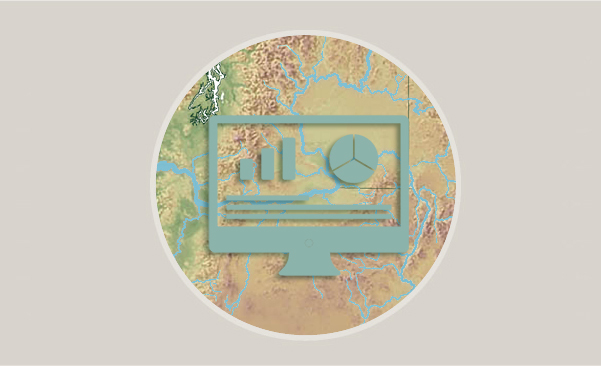
CAP Fish HLIs Query
High-level indicators shared through the Coordinated Assessments Partnership
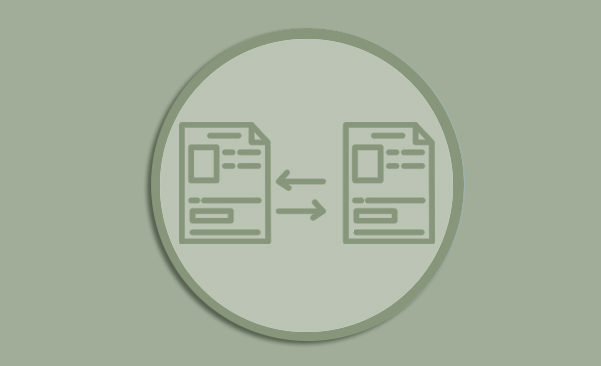
Data Exchange Standards
Review the definitions and formal rules for the structure of data elements guiding the CAP data exchange
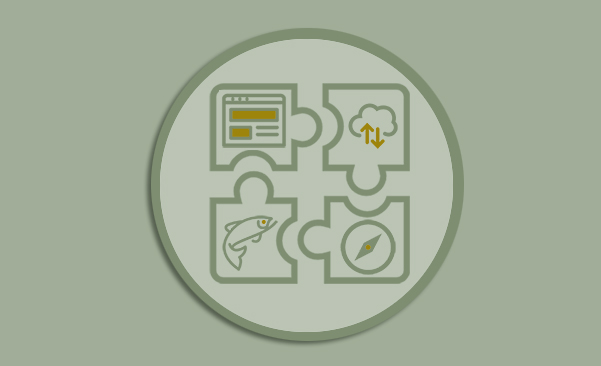
Partners' Resources
View additional data available from our Partner Data Tools page, including BPA’s conceptual onefishtwofish visualization tool, and the NPCC’s Program Tracker
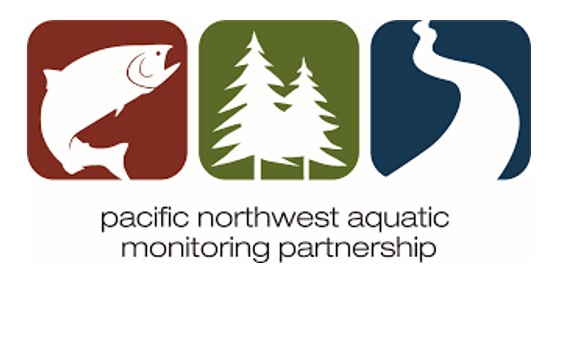
PNAMP's
CAP Webpage
Access background CAP documents and information about recent activities and planned events

